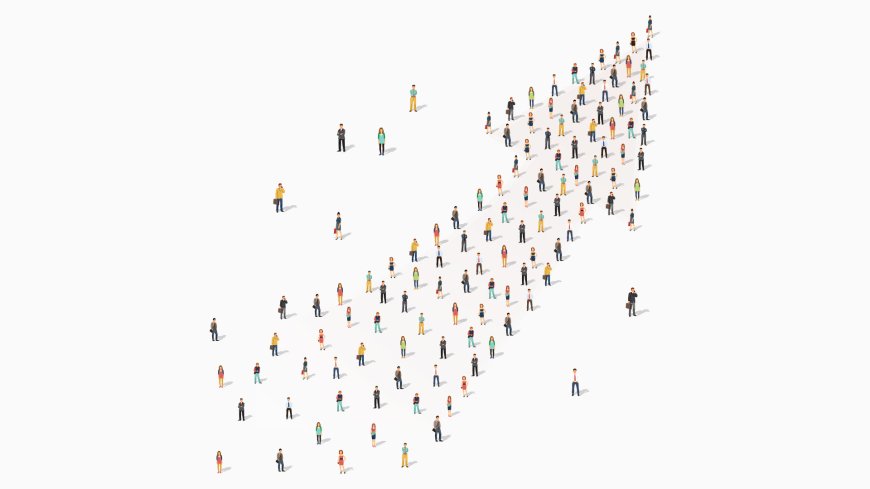Beating the Forgetting Curve with Community-Based Learning
Beat the forgetting curve with community-based learning. Discover interactive, applied training methods that make knowledge stick.

We’ve all been there: you learn something new, and within days it feels like it’s vanished from your mind. In the workplace, this isn’t just frustrating — it can mean the difference between applying valuable skills or letting them fade away.
This is exactly what German psychologist Hermann Ebbinghaus discovered back in the late 19th century when he introduced the Forgetting Curve. His research showed that without reinforcement, we lose about 50% of new information within a single day, and up to 90% after a week.
But here’s the good news: when we understand how the forgetting curve works, we can fight back. One of the most powerful ways to do that is through community-based learning — an approach that combines real-world application, peer interaction, and shared experiences to make knowledge stick.
What Is the Forgetting Curve?
Ebbinghaus’s experiments involved memorizing nonsense syllables and testing how quickly he forgot them over time. The results were striking — memory loss happens rapidly, with the steepest drop shortly after learning.
Modern neuroscience confirms this pattern still holds true, even in our digital, information-overloaded age. But it also shows that meaningful, relevant learning — especially when tied to emotions or personal experience — declines much more slowly. In other words, our brains hold on to what truly matters to us.
Why We Forget — and How to Remember More
Several factors influence whether knowledge stays with us:
-
Relevance and meaning
We retain information better when it’s personally meaningful. That’s why a case study about a challenge your team actually faces will stick longer than a generic example from a different industry. -
Emotions and environment
Stress releases cortisol, which disrupts memory formation. Rest and recovery, especially deep sleep, help the brain consolidate new information. -
The learning method
Clear, structured explanations and microlearning — breaking content into smaller, manageable chunks — improve retention by reducing cognitive overload. -
Repetition and timing
Spaced repetition strengthens neural pathways far more effectively than cramming. Think of it as exercising a muscle — the more you use it, the stronger it gets. -
Active participation
Learning by doing — through projects, role-plays, and problem-solving — engages multiple senses and creates deeper memory connections than passive listening ever could.
The Problem with Traditional Training
Even well-intentioned corporate training often fails the “memory test.” Common pitfalls include:
-
Covering too much material without linking it to real-world applications
-
Low engagement due to one-size-fits-all content
-
No structured opportunities for review or application
-
Isolated learning without collaboration
The result? Skills fade before they can be applied, and organizations miss out on the full return on their learning investments.
How Community-Based Learning Fights the Forgetting Curve
Community-based learning changes the equation by making the learning process social, practical, and collaborative. Instead of working through material alone, learners progress together as a group — discussing concepts, solving problems collectively, and supporting each other through challenges.
This approach not only increases engagement but also reinforces learning through repeated exposure and peer-to-peer interaction. Knowledge is anchored in real conversations and shared experiences, making it far harder to forget.
A strong community-based program typically includes:
-
Collaboration — Group discussions, peer feedback, and shared problem-solving
-
Engagement — Interactive content, gamified progress tracking, and recognition of achievements
-
Application — Scenario-based projects, role-play exercises, and real-world challenges that demand immediate use of new skills
The AGES Model: A Science-Backed Framework
A powerful way to design community-based learning is by applying the AGES model:
-
Attention — Keep learners engaged with focused, distraction-free activities
-
Generation — Encourage learners to generate their own insights for deeper understanding
-
Emotion — Tie learning to meaningful emotions, such as accomplishment or curiosity
-
Spacing — Spread learning over time to build lasting memory pathways
When combined with the social reinforcement of a learning community, these elements significantly increase the odds that knowledge will be remembered — and applied.
Making Learning Stick
Ebbinghaus showed us that forgetting is natural — but it’s not inevitable. By integrating community-based learning into corporate training, we give employees more than just knowledge; we give them a network of peers, opportunities for practice, and the motivation to apply what they’ve learned.
At EdTech Türkiye, we believe learning should be meaningful, interactive, and lasting. If you’d like to explore how community-based learning can transform your training programs and help your teams retain more of what matters, we’re here to share ideas, strategies, and real-world examples.
If you have any questions or want to discuss how to make learning truly stick in your organization, you can always reach out to us.